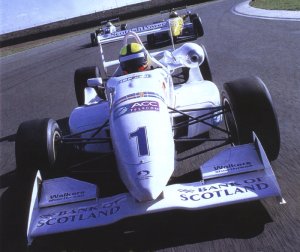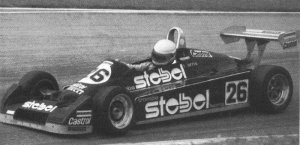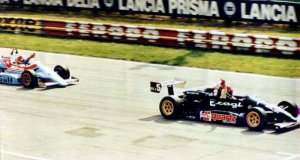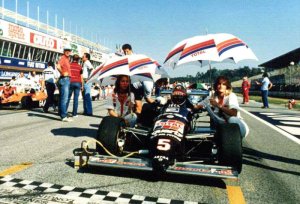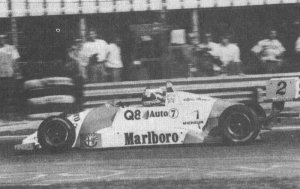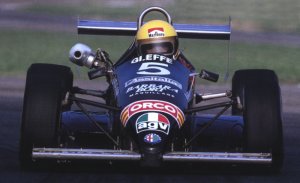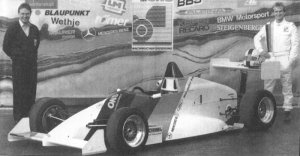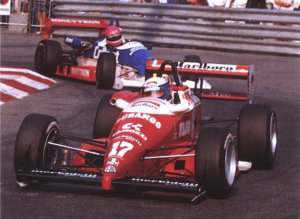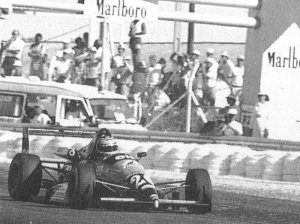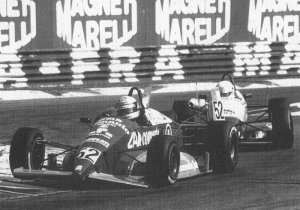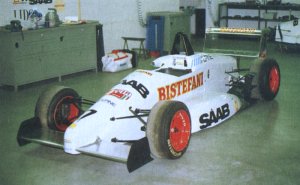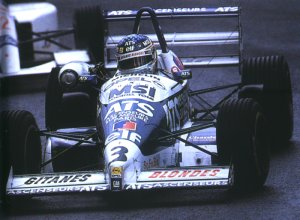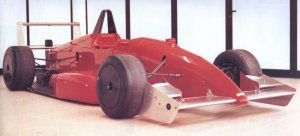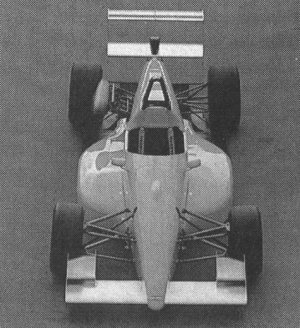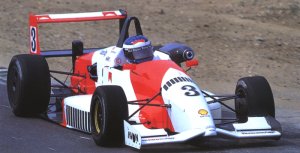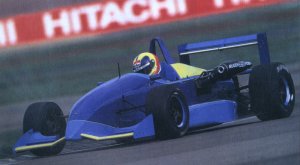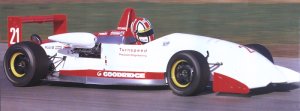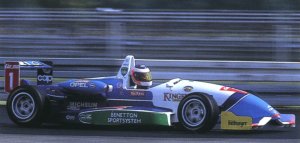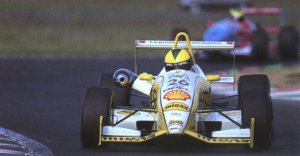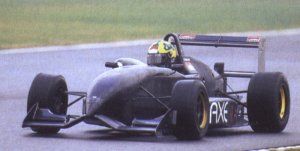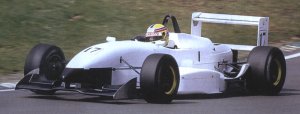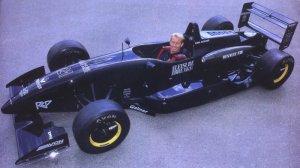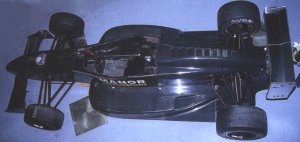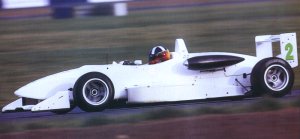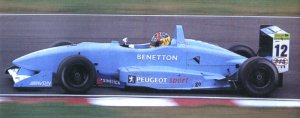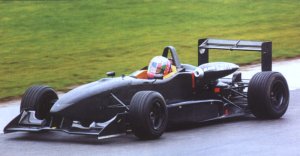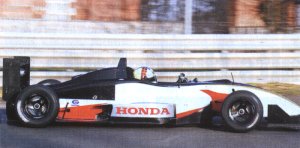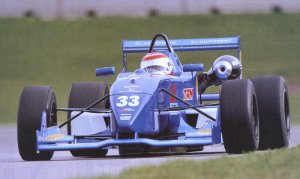 |
 |

The first Dallara F3 car was actually the Wolf car built for Walter Wolf racing in 1978 which as the renamed Emiliani won the 1980 Italian F3 Championship. The first true Dallara was produced in 1981 and within a dozen years Dallara had seen of all-comers including Ralt and Reynard. Their dominance has continued since then and despite the occasional competition from companies like TOM's and Martini they seem immovable. In the late 1980's Dallara returned to F1 when they built cars for Scuderia Italia, despite often impressing the cars lacked sufficient financial backing to ever be really successful. In 1999 Dallara were commissioned by Honda to build a F1 car for a projected return to F1 but in the end Honda decided to remain as engine suppliers only.
Dallara has also continued to work with sportscars and hand a hand in the Le Mans Toyota GT-One and the 24 Hour winning Audi R8. Currently in addition to F3 cars Dallara are building cars for IRL and Infiniti Pro racing in the US and Formula Nissan in Europe.

|
Following
on from the Wolf F3 car (q.v. and see above), the first F3
car to bear the name Dallara was the 381. Perhaps not surprisingly
the design was quite conventional with an aluminium monocoque and
a standard suspension. The cars were rarely seen outside Italy were
they gained a reputation for being very quick in a straight line.
The works team were hampered by getting involved with the Pirelli
tyre programme which slowed chassis development. At the end of the season Roberto Ravaglia took fifth in the Italian Championship. |

|
The
382 was a lightly revised version of the 381, there were changes to
the suspension geometry to suit Pirelli tyres, the sidepods were reprofiled
and the engine bay was strengthened. During the season the full-width
nose was abandoned for one reminiscent of the Ralt RT3 and the car
was renamed the 382B. The 382 continued to show well in Italy where Cazzaniga scored Dallara's first F3 win at Varano but it continued to suffer on its European outings where, despite all the testing, it just wouldn't handle properly on the Pirelli's. |

| 1983 saw further minor revisions for the 383 and the car raced almost exclusively in Italy, Livio took another win for Dallara at Varano in a 382-Alfa Romeo and finished second in the Italian Championship (although he switched a Ralt RT3 for the latter part of the year). Franco Forini steered his 383-Toyota to victory at Monza and took third in the Championship. |

| It was very little change again for the 384 and results were once again less than earth shattering. Franco Forini won one race in the Italian Championship with his works 382 and there were a couple of top six finishes, again for Forini, in the European Championship. |

|
As
with the other F3 manufacturers 1985 meant the introduction of a
new car as the flat bottom regulations came into effect. The F385
was Dallara's first composite offering as the opportunity was taken
to construct the new tub from carbon fibre. Suspension was via double
wishbones with the springs and dampers pullrod operated. The sidepods
were shallower than before with flat undersides and curved top sections,
a feature that would become a Dallara trademark until the introduction
of the F392.
The F385 would be the model that really put Dallara on the F3 map. Although still restricting their appearances to the Italian Championship Dallara won eleven out of fifteen events with Franco Forini, Alex Caffi and Fabrizio Barbazza finishing 1-2-3 in the final table although Caffi scored most of his points with a Martini. Caffi also won the European Cup, a one-off race that had replaced the old European Championship. |

|
Despite
the success of the F385 an entirely new model was offered for 1986,
there was a new tub in carbon fibre/kevlar and aluminium honeycomb
with general revisions to the rest of the design. The pullrod suspension
and unusual sidepod shape were retained, the oil cooler sat in the
left-hand pod with the water radiator in the right. Due to the lack
of depth of the pods the water radiator was set at an almost horizontal
angle. |

|
The
F387 was largely the F386 with a years development behind it and
following on from the successes of the F386 even more cars were
sold to teams in France and Germany in addition to the plethora
to be found in Italy. Surprisingly none of the UK based teams seemed
to be prepared to take a chance on developing one to race on the
UK spec Avon radials.
Once again Italy saw a 1-2-3 finish for Dallara with Enrico Bertaggia securing the top spot, the F387 winning nine out of the eleven races. In France Jean Alesi took the championship, he began the year in a works Martini but was unhappy with it. A one-off race in his old F386 that saw him win convinced him that a Dallara was needed and after a brief return to Martini Alesi bought a F387 and proceeded to win six races and secure the French crown. In Germany it was all about Bernd Schneider and the Horst Schubel run F387. Of the nine race German Championship Schneider took part in eight races and won seven of them easily winning the title. |

|
The
F388 continued the evolutionary process of the F387. The most obvious
changes were an increase in length, a reduction in weight and the
adoption of a Dallara designed gearbox casing that still used Hewland
internals.
As usual in Italy it was nearly all Dallara, Emanuele Naspetti took the championship with the F388 taking first and second as well as eight of the top ten positions. France was a similar story, Eric Comas finished on top and the F388 took the top five places. Surprisingly, in view of the past two seasons results, the F388 did not feature in Germany with a best of sixth in the final placings. |

|
Once
again the F389 wasn't much different from the previous year's model
but it had a reputation for being tricky to get the best out of
it. As usual in Italy it was a popular choice and the F389 took
eight out of the top eleven places although Reynard proved stiff
competition with their 893 taking second and fourth behind Champion
Gianni Morbidelli. In France it was second and third for the chassis
behind the runaway winner, Jean-Marc Gounon's Reynard. In Germany
it was Ralt and Reynard taking the honours with the F389 unable
to do better than fifth after front runner Heinz-Harald Frentzen
switched to a Reynard. As in previous year's the UK was a Dallara-free
zone. |

|
Once again changes to the F390 were small, mechanically pullrods were still used all-round and the aerodynamic package was largely unchanged. Although the F390 had its successes it was mostly second best to the Reynard 903 and, later in the year, the Ralt RT34. The Dallara as usual did not appear in the UK and it largely vanished from the German Championship. In Italy it was a 2-3-4 finish behind the winning Reynard of Roberto Colciago, coincidentally it was a similar story in France, 2-3-4 behind champion Eric Helary who started in a Reynard 903 and then switched to a Ralt RT34. A lot of the F390's success seemed to come from the relatively large number of teams running it. |

|

|

|

|

|

|

|

|

|

|

|

|

|
| Drivers | |
| 1981 |
381 |
| 1982 |
382 |
| 1983 |
383 382 |
| 1984 |
384 383 |
| 1985 |
F385 ? |
| 1986 |
F386 |
| 1987 |
F387 F386 |
| 1988 |
F388 F387
F386 |
| 1989 | F389 F388 F387 F386 |
| 1990 | F390 F389 F388 F387 F386 |
| 1991 | |
| 1992 | |
| 1993 | |
| 1994 | |
| 1995 | |
| 1996 | |
| 1997 | |
| 1998 | |
| 1999 | |
| 2000 | |
| 2001 | |
| 2002 | |
| 2003 |
